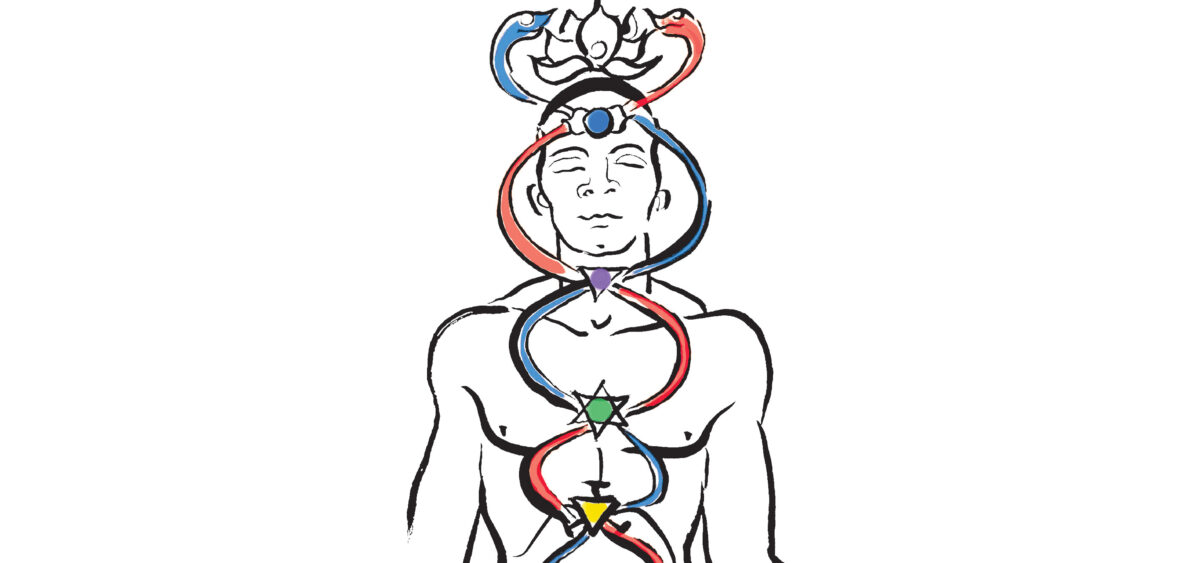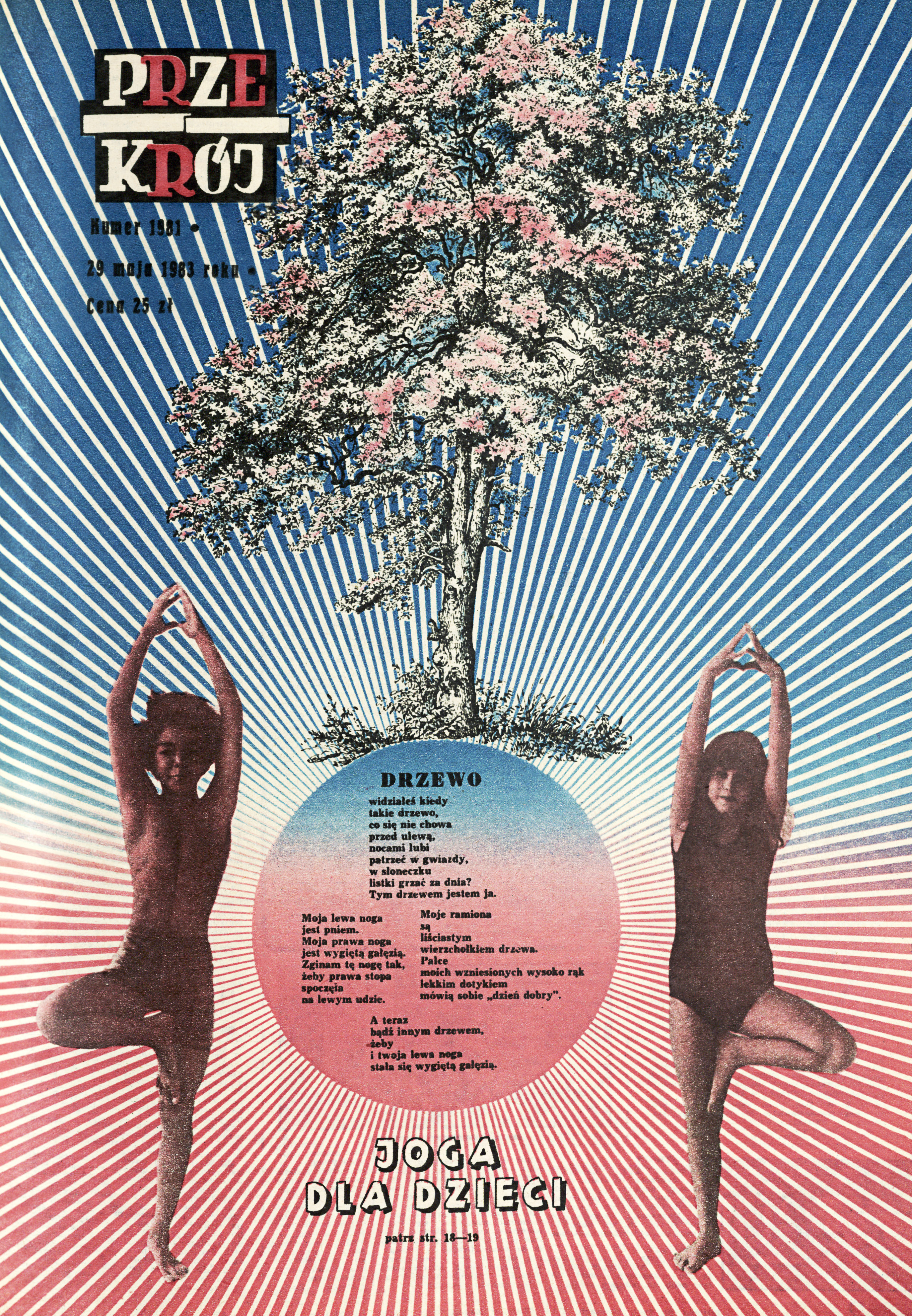
Many yoga traditions recognize the existence of chakras and pay them special attention. This insight is used in meditation, and in working with the body and consciousness.
The term chakra comes from Dharmic religions that originated in the Indian subcontinent, including Hinduism, Buddhism, and Jainism. In Sanskrit, chakra means “wheel,” or “center,” and is based on the premise that humans are more than just a physical body, they also have an energetic, or “subtle” body to which chakras belong. The chakras are mentioned as early as in the Upanishads, the canonical texts dating between the eighth and third centuries BCE, as well as in the Yoga Bhashya, the oldest commentary on the Patanjali Yoga Sutras, written around the second century CE.
Most traditions recognize the existence of seven main chakras, along with many smaller ones (ranging from a few to even eighty-eight thousand). The main chakras are located along the sushumna, the central nadi, one of the several energy channels of the body, which is sometimes compared to a hollow flute through which our consciousness moves. Sushumna is crossed by two other main energy channels: ida, which represents the feminine energy of Shakti, and pingala, representing the masculine energy of Shiva. They run as vertical sine waves originating around the base of the spine, where the ida begins on the left side and the pingala on the right, intersecting one another at every chakra. It’s believed that there are seventy-two thousand energy channels flowing with prana (the life force), and they all join in the chakras like the spokes of a wheel.
In the Indian and Tibetan traditions chakras are usually regarded in connection to consciousness, whereas in Europe emphasis is placed mostly on the flow of energy. It can move freely or be disturbed (e.g., by emotions, a specific event or situation), affecting our health, well-being and satisfaction in a given sphere of life, for each chakra serves a specifically-defined function. This understanding of the chakras was spread in the West at the beginning of the 20th century by Sir John Woodroffe and Charles Webster Leadbeater, among others. The former, who wrote under the pseudonym Arthur Avalon, published The Serpent Power in 1919, a text still prevalent today. The latter wrote an equally-renowned publication—The Chakras, in which he recommends engaging these energetic focal points as a way to ensure psychophysical balance. Later researchers have linked the chakras with specific endocrine glands, as well as physiological systems, therefore creating the modern Western concepts of working with energy.
In yoga, it’s the kundalini and tantra schools that focus on working with chakras. “Work” is understood as meditation, visualizing symbols and colors assigned to each chakra, practicing mantras —each chakra has its individual bija mantra, consisting of a single, specified syllable. It also includes physical exercises (e.g., asanas and kriyas), along with breathing techniques. Most often the process starts with the first, or the root chakra, and goes upward, one chakra after another. There’s no need to be a yogi to work with them—utilized as they are as a method of calming the mind and improving concentration.
Muladhara—The Root Chakra
As the name suggests, the first chakra is the foundation, not only because it lies at the base of the spine, between the perineum and the tailbone, but also because it’s responsible for a sense of security and material needs. The name derives from the word mula, meaning “root” in Sanskrit. Its associated element is earth, symbolically, as well as literally, and it is assigned the color red. Its yantra (geometric diagram) is a downward-pointing triangle locked in a square, and its designated animal is an elephant with seven trunks. Muladhara is most often visualized as a red lotus with four petals. It’s responsible for the sense of smell, its endocrine gland is the adrenal gland, and its physiological system is that of excretion. The mantra is the monosyllabic sound, lam.
Svadhishthana—The Sacral Chakra
The second chakra lies at the level of the sacrum, at the base of the spine. Yogis usually indicate its location by placing three fingers below the belly button. It’s associated with pleasure, joy, and creativity, as well as sexuality, and is visualized as an orange lotus flower with six petals. Svadhishthana’s symbolic animal is a crocodile, and its representative yantra depicts a crescent inside a six-petaled lotus flower. It’s attributed to the element of water, the color orange, and the sense of taste. This chakra is governed by the reproductive system, and the ovaries and testes are its glands. The mantra is the sound of vam.
Manipura—The Solar Plexus Chakra
The third chakra is located at the solar plexus, just above the navel. It’s referred to as the power chakra, because it conditions willpower, all action (including professionally), and the pursuit of specific goals. It’s visualized as a yellow lotus flower with ten petals, becoming its yantra when inscribed with a downward-pointing triangle inside. Manipura’s animal is a ram, its element is fire, the color is yellow, its glands are the spleen and pancreas, and its system, digestive. The mantra is the syllable ram.
Anahata—The Heart Chakra
The fourth chakra is at the height of the heart. It’s associated with the values of love, compassion, vulnerability, and acceptance. Assigned the sense of touch and the element of air, Anahata is visualized as a green lotus flower with twelve petals. It’s represented by the antelope, and its yantra consists of two intersecting triangles symbolizing unity, and thus the harmony of the masculine Shiva and the feminine Shakti energies. The color of this chakra is green, the endocrine gland is the thymus, and the physiological system is that of circulation. It’s expressed with the chanting of the yam sound.
Vishuddha—The Throat Chakra
The fifth chakra is at the level of the throat. Responsible for communication and self-expression, its element is ether and its color is blue. Vishuddha is visualized as a sixteen-petal lotus flower of that same hue, outlining its yantra of a circle inside a triangle. Its animal symbol is a white elephant, its glands, the thyroid and parathyroid, and its system, respiratory. The sound of ham is the chakra’s mantra.
Ajna—The Third Eye Chakra
The sixth chakra is located at the forehead, in between the eyebrows. It’s no coincidence that it’s called the “third-eye,” as it’s responsible for extrasensory perception, also known as inner vision (clairvoyance), or simply intuition. The color of Ajna is indigo, and it’s visualized by a two-petaled lotus in the same tone. Its yantra is a downward-pointing triangle inscribed inside its flower. The chakra’s sense organ is the mind, and it’s ascribed to the pituitary gland and the autonomic nervous system. The mantra is om.
Sahasrara—The Crown Chakra
The yogis indicate the position of the seventh chakra by placing three or four fingers above the head. It’s the chakra responsible for higher consciousness, where the illusion of detachment vanishes, achieving complete connection with the universe, eternity, god—a state which is difficult to articulate and that each tradition describes in different terms. Sahasrara is visualized as a multicolored lotus flower with a thousand petals. It’s this bloom, inscribed in a circle, that is also its yantra. The color is violet, its endocrine gland is the pineal gland, and the system is the central nervous system. The same as the sixth chakra, its mantra is om, or simply silence.









